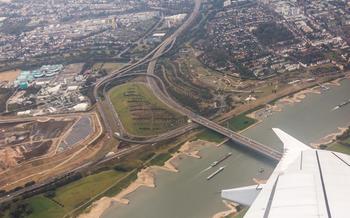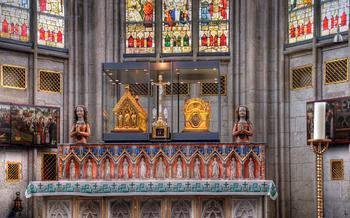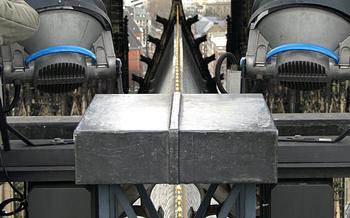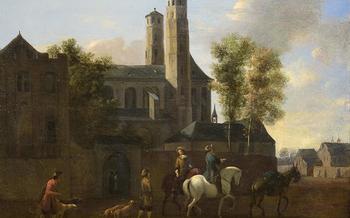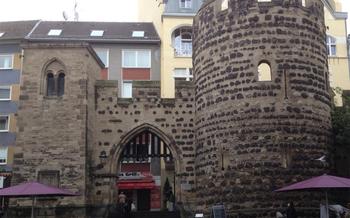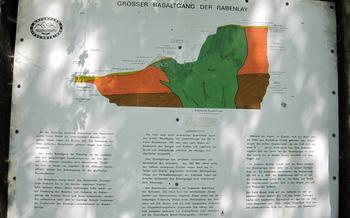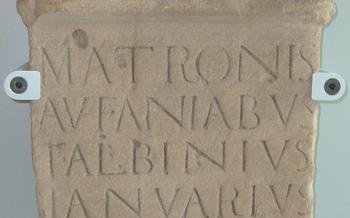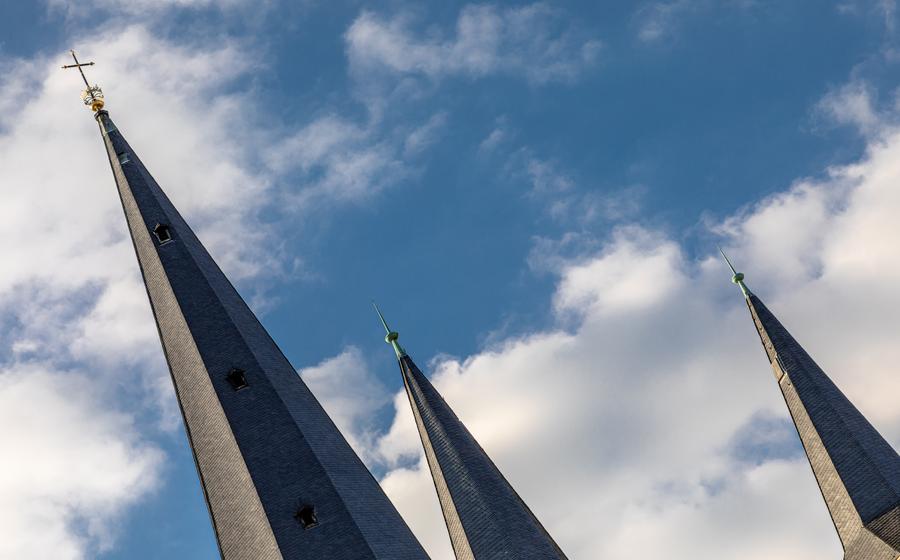
Bonn Minster
- Bonn Minster: A Historical Masterpiece
- Exploring The Crypt
- The Marienkapelle (St. Mary's Chapel)
- The Kreuzgang (Cloisters)
- The Treasury: A Treasure Trove of Sacred Artifacts
- Guided Tours: Unveiling the Hidden Treasures of Bonn Minster
- Admission and Timings:
- Dress Code and Etiquette
- Nearby Attractions:
- The Bonn Minster: Events and Festivals
- Souvenirs and Gifts
- Accessibility for Persons with Disabilities
- Photography Tips
- The Cherry on Top: Unveiling the Hidden Treasure of Bonn Minster
Bonn Minster: A Historical Masterpiece
The Bonn Minster stands as a testament to the rich history of the city of Bonn. Its origins can be traced back to the 6th century when a small church was built on the site. Over the centuries, the church underwent several expansions and renovations, culminating in the magnificent Romanesque-Gothic structure we see today. The minster has played a significant role in the religious and cultural life of Bonn, serving as a place of worship, a center of learning, and a symbol of the city's prosperity. Its impressive architecture, intricate artwork, and historical significance make it a must-visit destination for anyone interested in exploring the cultural heritage of Germany.
Step inside the minster, and you'll be awestruck by its stunning interior. The vaulted ceilings soar overhead, supported by massive pillars that create a sense of awe and wonder. The intricate stained glass windows depict biblical scenes and historical figures, casting a colorful glow throughout the sanctuary. The walls are adorned with beautiful frescoes and carvings, each telling a story from the Bible or the history of the minster. The altar, with its golden reredos and intricate carvings, is a masterpiece of craftsmanship. The Bonn Minster is not just a place of worship; it is also a treasure trove of art and history, waiting to be explored and admired.
Exploring The Crypt
Journey into the depths of the Bonn Minster and discover the captivating world of the crypt, a realm steeped in history and mystery. Originally serving as a burial site for prominent figures, the crypt now unveils stories of the past that resonate within its ancient walls.
The architectural design of the crypt is a testament to the ingenuity of medieval builders. Its vaulted ceilings, supported by sturdy pillars, create a sense of awe and grandeur. The acoustics within the crypt are equally impressive, with whispers echoing through the chamber, adding to its mystical ambiance.
Artifacts and relics of immense historical value reside within the crypt, offering glimpses into the lives and beliefs of those who came before. These remnants of the past, carefully preserved and displayed, shed light on the rich history of the Bonn Minster and the profound impact it has had on the community.
As you traverse the crypt, an atmosphere of tranquility envelops you, inviting contemplation and reflection. The soft glow of candlelight casts an ethereal glow upon the surroundings, creating a sacred space that inspires reverence and introspection. Whether seeking solace or seeking a deeper connection to the past, the crypt provides a sanctuary for the soul.
The Marienkapelle (St. Mary's Chapel)
Tracing its history back to the 13th century, the Marienkapelle, also known as St. Mary's Chapel, stands as a testament to the devotion and artistry that shaped the Bonn Minster. Constructed as a private chapel for the Archbishop of Cologne, this Gothic masterpiece exudes an air of serenity and spirituality.
Step inside the Marienkapelle, and your gaze will be drawn to the intricate stained glass windows that bathe the interior in a kaleidoscope of colors. These exquisite windows, depicting scenes from the life of Mary, Mother of Jesus, create an ethereal atmosphere that invites contemplation and reverence.
The altar, adorned with intricate carvings and delicate sculptures, serves as the focal point of the chapel. Its central panel features a stunning depiction of the Virgin Mary holding the infant Jesus, a poignant reminder of the chapel's dedication to the Mother of God.
The Marienkapelle is not merely a historical relic but a living testament to the enduring power of faith. Throughout the year, the chapel hosts a variety of religious ceremonies, including masses, weddings, and baptisms, each adding to its rich tapestry of spiritual significance.
Whether you seek a moment of quiet reflection or a deeper connection with your faith, the Marienkapelle within the Bonn Minster offers a sanctuary for the soul, inviting you to experience the divine in the heart of this historic city.
The Kreuzgang (Cloisters)
The Kreuzgang, or cloisters, of the Bonn Minster is a serene and contemplative space that invites visitors to pause and reflect. Originally serving as a place of retreat and meditation for the monks, the cloisters today offer a tranquil oasis amidst the bustling city.
History
Built in the 13th century, the Kreuzgang was an integral part of the monastic complex. Monks would use the cloisters for processions, reading, and contemplation. The cloisters also served as a burial ground, with several prominent figures interred within its walls.
Architecture
The Kreuzgang is a beautiful example of Gothic architecture. The vaulted ceilings, supported by slender columns, create a sense of height and spaciousness. The intricate carvings and tracery on the walls and windows add to the cloisters' charm and elegance.
Atmosphere
The Kreuzgang exudes a peaceful and serene atmosphere. The soft light filtering through the stained-glass windows casts a warm glow on the stone walls, creating a sense of tranquility. The sound of footsteps echoing in the cloisters adds to the contemplative ambiance.
Significance
The Kreuzgang was an important part of monastic life in the Middle Ages. It provided a space for the monks to retreat from the outside world and focus on their spiritual growth. Today, the cloisters continue to serve as a place of peace and reflection for visitors from all walks of life.
The Treasury: A Treasure Trove of Sacred Artifacts
History: The treasury of the Bonn Minster holds a rich and fascinating history, dating back to the Middle Ages. It served as a secure repository for the minster's most valuable possessions, including sacred relics, liturgical objects, and priceless works of art. Over the centuries, the treasury has been expanded and enriched through donations from devout patrons and ecclesiastical leaders, transforming it into a veritable treasure trove of religious and cultural significance.
Collection: The treasury showcases an impressive array of sacred objects, each possessing its own unique story and artistic merit. Among the highlights are the gold and silver reliquaries, intricately crafted to house the relics of saints and martyrs. Visitors can marvel at the exquisite craftsmanship of these reliquaries, adorned with precious stones, enamel work, and delicate filigree.
Highlights: One of the most notable pieces in the treasury is the gold cross of Archbishop Konrad von Hochstaden, dating back to the 13th century. This magnificent cross is a testament to the skill and artistry of medieval goldsmiths, featuring intricate carvings, enamel work, and precious gemstones. Another highlight is the 12th-century ivory diptych, depicting scenes from the life of Christ. Its delicate carvings and intricate details offer a glimpse into the artistic traditions of the Romanesque period.
Significance: The treasury of the Bonn Minster serves as a testament to the enduring faith and devotion of the Catholic community. It preserves and showcases the artistic and cultural heritage of the minster, providing visitors with a glimpse into the rich history and traditions of the Catholic Church. The treasury's collection of sacred objects offers a tangible connection to the past, allowing visitors to appreciate the craftsmanship, artistry, and religious significance of these treasured artifacts.
Guided Tours: Unveiling the Hidden Treasures of Bonn Minster
Embark on a journey through time as you delve into the captivating history and intricate details of Bonn Minster with the guidance of knowledgeable experts. Guided tours are available in various languages, ensuring that visitors from all corners of the globe can unravel the stories and secrets held within these sacred walls.
These tours provide an immersive experience, offering insights into the architectural marvels, religious significance, and cultural heritage of the minster. Expert guides will lead you through the grand nave, the atmospheric crypt, the serene Marienkapelle, and the tranquil Kreuzgang, sharing fascinating anecdotes and historical facts along the way.
By joining a guided tour, you'll gain exclusive access to restricted areas, such as the treasury, where a treasure trove of sacred artifacts awaits your discovery. These tours not only enhance your understanding of the minster's significance but also create a deeper connection to its spiritual and historical legacy.
To make the most of your visit, consider booking a guided tour in advance, especially during peak tourist season. Whether you're a history buff, an architecture enthusiast, or simply seeking a spiritual connection, these tours will leave you with a profound appreciation for the grandeur and beauty of Bonn Minster.
Admission and Timings:
Visiting the Bonn Minster is a budget-friendly experience, with free admission for all visitors. It welcomes visitors throughout the week, with varying hours depending on the day. From Monday to Saturday, the minster is open from 10:00 AM to 6:00 PM, allowing ample time to explore its stunning interiors and admire its architectural marvels. On Sundays and public holidays, the opening hours are slightly shorter, from 1:00 PM to 6:00 PM, catering to those who prefer a more leisurely visit.
The Bonn Minster is wheelchair accessible, ensuring that visitors with disabilities can comfortably navigate its spaces. Elevators are available to access different levels of the minster, and ramps provide smooth transitions between areas. Visitors can inquire about accessible tours or assistance from the friendly staff, who are always ready to accommodate the needs of all guests.
To fully appreciate the minster's beauty and avoid crowds, it's recommended to plan a visit during the off-season or on weekdays. This allows for a more serene and intimate experience, providing ample time to soak in the tranquility and marvel at the intricate details that make the Bonn Minster a true masterpiece of German architecture.
Dress Code and Etiquette
When visiting the Bonn Minster, it is important to dress respectfully, as it is a sacred religious site. This means avoiding shorts, tank tops, and other revealing clothing. Visitors are expected to be quiet and respectful of others who are praying or attending services. Photography is permitted in most areas of the minster, but flash photography and tripods are not allowed. Visitors should be mindful of other visitors and avoid blocking their views or taking photographs that may be considered intrusive.
Tips for Proper Etiquette:
- When entering the minster, remove your hat or head covering.
- Be respectful of others who are praying or attending services.
- Avoid talking loudly or making unnecessary noise.
- Stay on designated paths and avoid touching or leaning on the walls or artwork.
- If you have any questions or need assistance, please approach one of the staff members or volunteers.
Nearby Attractions:
Bonn offers a wealth of attractions beyond the Bonn Minster, allowing visitors to immerse themselves in the city's rich history and vibrant culture. The Beethoven House, birthplace of the legendary composer Ludwig van Beethoven, is a must-visit for music enthusiasts. Take a leisurely stroll through the Hofgarten, one of Germany's oldest and most beautiful parks, and admire its tranquil gardens and sculptures. Explore the Bundeskunsthalle, a renowned art museum showcasing a diverse collection of modern and contemporary art. For a unique perspective of the city, climb the Alter Zoll tower for panoramic views of Bonn and the Rhine River. Immerse yourself in the city's past at the Rheinisches Landesmuseum Bonn, where you can learn about the region's history from prehistoric times to the present day. Plan a visit to the August Macke Haus, dedicated to the works of the Expressionist painter August Macke, a prominent figure in the Bonn art scene. These attractions, coupled with the Bonn Minster, create a comprehensive cultural experience that showcases the city's diverse offerings.
The Bonn Minster: Events and Festivals
The Bonn Minster is not only a historical and architectural marvel but also a vibrant hub for cultural and religious events. Throughout the year, the minster plays host to a diverse range of events and festivals that celebrate its rich heritage and bring the community together.
Upcoming Events and Festivals:
-
Christmas Market: During the festive season, the Bonn Minster transforms into a magical Christmas market, filled with enchanting stalls selling traditional German delicacies, handcrafted gifts, and festive decorations.
-
Organ Concerts: The minster's grand organ is a masterpiece in itself, and visitors can experience its majestic sounds during regular organ concerts. These concerts showcase the talents of renowned organists and feature a repertoire of classical and contemporary pieces.
-
Pilgrimages: The Bonn Minster has been a significant pilgrimage site for centuries, and it continues to attract pilgrims from near and far. Special pilgrimage services and guided tours are organized throughout the year, allowing visitors to learn about the minster's spiritual significance and connect with its rich history.
-
Exhibitions: The minster regularly hosts exhibitions that explore its history, art, and cultural significance. These exhibitions often showcase rare artifacts, historical documents, and artworks, providing visitors with a deeper understanding of the minster's role in the community.
Insider Tip:
For an unforgettable experience, plan your visit to coincide with the annual Bonn Minster Festival. Held during the summer months, this festival features a vibrant program of concerts, exhibitions, guided tours, and family-friendly activities, transforming the minster into a lively hub of celebration and community spirit.
Souvenirs and Gifts
As you depart from the sacred halls of Bonn Minster, don't forget to take home a piece of its rich history and captivating charm. Near the minster, you'll find an array of gift shops and souvenir stores that offer a treasure trove of mementos to commemorate your visit. From intricately designed postcards featuring stunning views of the minster to beautifully crafted replicas of its iconic artifacts, you'll find a range of souvenirs that capture the essence of this architectural masterpiece.
Among the must-have souvenirs, consider purchasing a book that delves into the fascinating history of the minster, providing an in-depth exploration of its construction, architectural styles, and religious significance. Alternatively, a postcard adorned with intricate details of the minster's facade or stained glass windows serves as a timeless reminder of its captivating beauty.
For those seeking a truly unique memento, explore the local crafts and artisanal products inspired by the minster. Local artisans have masterfully created intricate jewelry pieces, pottery, and wood carvings that draw inspiration from the minster's architecture and symbolism. These one-of-a-kind creations not only serve as souvenirs but also support the talented artisans who keep traditional crafts alive.
Remember to ask about local bargaining customs and strategies to ensure you get the best prices for your souvenirs. Embrace the opportunity to engage with friendly vendors and learn about the local culture as you shop for cherished mementos of your time at Bonn Minster.
Accessibility for Persons with Disabilities
The Bonn Minster is committed to ensuring that all visitors, regardless of their abilities, can enjoy a comfortable and fulfilling experience. The minster is equipped with several accessibility features to accommodate persons with disabilities. Wheelchair ramps and elevators provide easy access to all levels of the building, including the crypt and the treasury. Additionally, accessible restrooms are available for the convenience of visitors. To further enhance accessibility, the minster offers guided tours specifically designed for visitors with disabilities. These tours are conducted by knowledgeable guides who are trained to provide assistance and support throughout the visit. Visitors can inquire about these tours when booking their tickets. For more information or assistance, visitors can contact the minster's information desk or visit their website, where they can find additional resources and contact details for accessibility-related services.
Photography Tips
Lighting: Aim for a visit on a sunny day when natural light floods the interior, illuminating the vibrant stained glass windows and casting dramatic shadows on the intricate carvings. For exterior shots, capture the minster's grandeur against a clear blue sky or the warm glow of the setting sun.
Angles: Experiment with different angles to capture the minster's towering spires, intricate facade, and impressive scale. Step back to capture the entire structure or zoom in to highlight specific architectural details.
Composition: Use the surrounding environment to create a visually compelling composition. Incorporate elements like trees, flowers, or people to add depth and interest to your shots.
Editing: Enhance your photographs with basic editing techniques to adjust exposure, contrast, and color balance. Use editing software to remove unwanted elements or distractions, creating a clean and polished final image.
The Cherry on Top: Unveiling the Hidden Treasure of Bonn Minster
As you explore the depths of the Bonn Minster, keep an eye out for a hidden gem that often goes unnoticed by visitors. Tucked away in a secluded corner of the crypt, you'll find a small, unassuming door that leads to a hidden chamber. This secret room, once used as a treasury, now houses a collection of ancient artifacts and relics that tell the story of the minster's rich history. Among the treasures, you'll find a beautifully preserved reliquary said to contain a fragment of the True Cross. Discover the captivating tales behind these artifacts and immerse yourself in the mystique of this hidden sanctuary.

